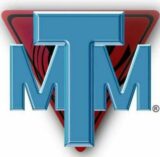
In recent times, there has been a buzz surrounding the withdrawal of Crestor from the market. Crestor, a popular statin medication used to manage cholesterol levels, has garnered attention due to its sudden disappearance. In this article, we delve into the reasons behind Crestor being taken off the market, exploring the safety concerns, regulatory actions, and the implications for patients and healthcare providers.
The Rise of Crestor and Its Benefits
Crestor, also known by its generic name Rosuvastatin, gained popularity for its efficacy in lowering bad cholesterol (LDL) levels while increasing good cholesterol (HDL) levels. It played a crucial role in preventing cardiovascular diseases and stroke, which made it a valuable asset in the medical field. Patients relied on Crestor to manage their cholesterol levels and reduce the risk of heart-related complications.
Safety Concerns and Regulatory Involvement
Despite its benefits, concerns began to surface regarding potential adverse effects associated with Crestor. Reports of muscle pain, kidney issues, and a rare condition called rhabdomyolysis raised red flags. Regulatory agencies, such as the FDA, started closely monitoring these concerns and conducting investigations into the medication’s safety profile. The FDA issued warnings about these potential risks, advising healthcare professionals to consider these factors when prescribing Crestor.
Voluntary Withdrawal and Pharmaceutical Companies
In response to mounting safety concerns and regulatory pressures, the pharmaceutical companies behind Crestor took a proactive step. The decision to withdraw Crestor from the market was a voluntary one, aimed at ensuring patient safety and addressing the emerging issues. This move was also influenced by the availability of alternative statin medications that offered similar cholesterol-lowering benefits with potentially fewer risks.
Impact on Patients and Healthcare Providers
The withdrawal of Crestor posed challenges for both patients and healthcare providers. Patients who were benefiting from Crestor had to transition to alternative medications, which required careful monitoring and adjustments. Healthcare providers needed to stay informed about the reasons behind Crestor’s withdrawal, enabling them to make well-informed decisions for their patients’ cholesterol management.
Looking Ahead: Lessons Learned
The withdrawal of Crestor emphasizes the importance of continuous pharmacovigilance and post-marketing surveillance. It highlights that even well-established medications can face safety concerns that require prompt action. Pharmaceutical companies, regulatory agencies, and healthcare providers must work together to ensure patient safety remains a top priority. As newer medications emerge, the Crestor case serves as a reminder that robust monitoring systems are vital to detect and address adverse effects in a timely manner.
In conclusion, the withdrawal of Crestor from the market was driven by growing safety concerns and regulatory involvement. While patients and healthcare providers faced challenges during this transition, the experience underscores the need for ongoing vigilance in the pharmaceutical industry. Learning from Crestor’s case, we can strive for safer and more effective treatments in the future.
